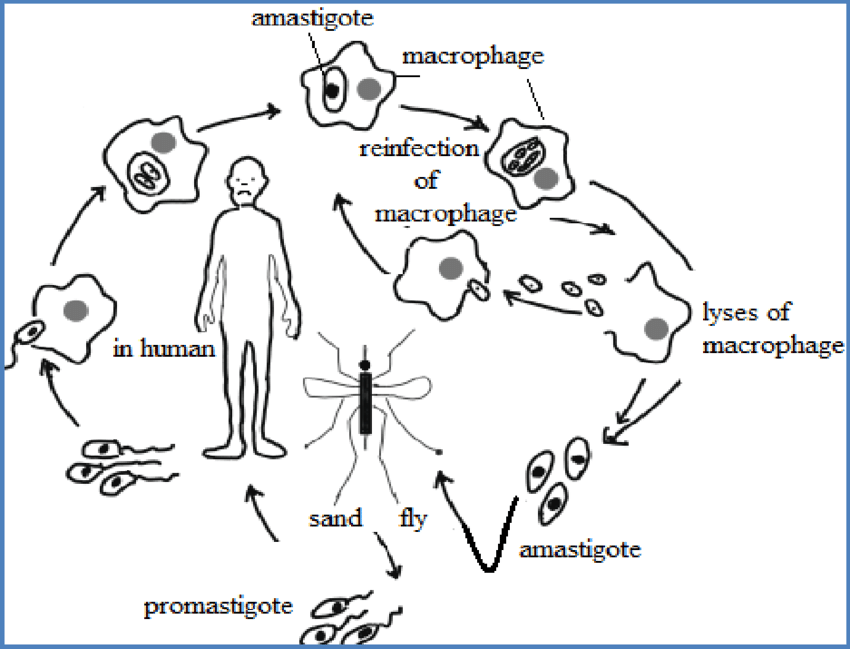In the life cycle of Leishmania donovani, it has two hosts and they are human and sandfly. Leishmania donovani causes visceral leishmaniasis in man which is also known as Kala-azar or Dumdum fever. It is an important pathogenic zooflagellate genus closely related to Trypanosoma. In this article, we will learn the life cycle of Leishmania donovani which is described below:-

Image Source. Image uploaded by Abuobieda Bala Abusharib
1. Hosts
-
- It requires two hosts to complete its life cycle.
- Man is the primary or principal host.
- Inside man, the parasite feeds and multiplies asexually.
- Sandfly, the blood-sucking insect, is the secondary or intermediate host or vector.
- Some mammals like dogs, jackals, gerbils, and ground squirrels also serve as reservoir hosts.
- In the reservoir host, the parasites do not undergo any change but wait for their introduction into the primary host or man.
2. Life Cycle in Man
A) Infection
-
-
- The parasite is transmitted to man by the sandfly Phlebotomus argentipes.
- The insect vector, which has fed on some suitable fruit or juice after infected human blood meal, shows an enormous number of parasites in its buccal cavity and pharynx.
- Salivary glands of the vector are not involved as in the case of a tsetse fly transmitting the trypanosomes.
- When such a sandfly bites a man, it makes a wound with its proboscis and liberates the parasites.
-
B) Multiplication
-
-
- The parasites introduced by sandflies into the human body are in the promastigote or leptomonad form.
- Then the parasites enter into the reticulo-endothelial system (liver, spleen, bone marrow, and lymph nodes) and change into amastigote form.
- Then the amastigotes or leishmanial forms multiply by binary fission.
- When the multiplication occurs, the host cells become greatly enlarged.
-
C) Spread of Infection
-
-
- When the number of parasites reaches 50-200 in a single host cell, the cell ruptures, and the parasites come out.
- Then the parasites attack new host cells and repeat the multiplication cycle.
- In this case, the reticulo-endothelial system becomes progressively infected.
- Some of the amastigotes become phagocytosed by neutrophils and monocytes.
-
3. Life Cycle in Sandfly
A) Transfer to Sandfly
-
-
- When a sandfly sucks the blood of an infected person, it takes free amastigotes.
- The fly also takes parasitised neutrophils and monocytes with their blood meal.
-
B) Development in Sandfly
-
-
- The amastigote forms change into promastigote forms in the midgut of the sandfly.
- In this form, they become elongated and acquire a free flagellum.
- Then the promastigote forms multiply by longitudinal fission.
- In 6-9 days, the number of parasites becomes enormous.
- The parasites then come to the buccal cavity and pharynx of the sandfly.
- When a heavily infected sandfly bites a man, the transmission of promastigotes occurs.
-
——— THE END ———-
Read More:

